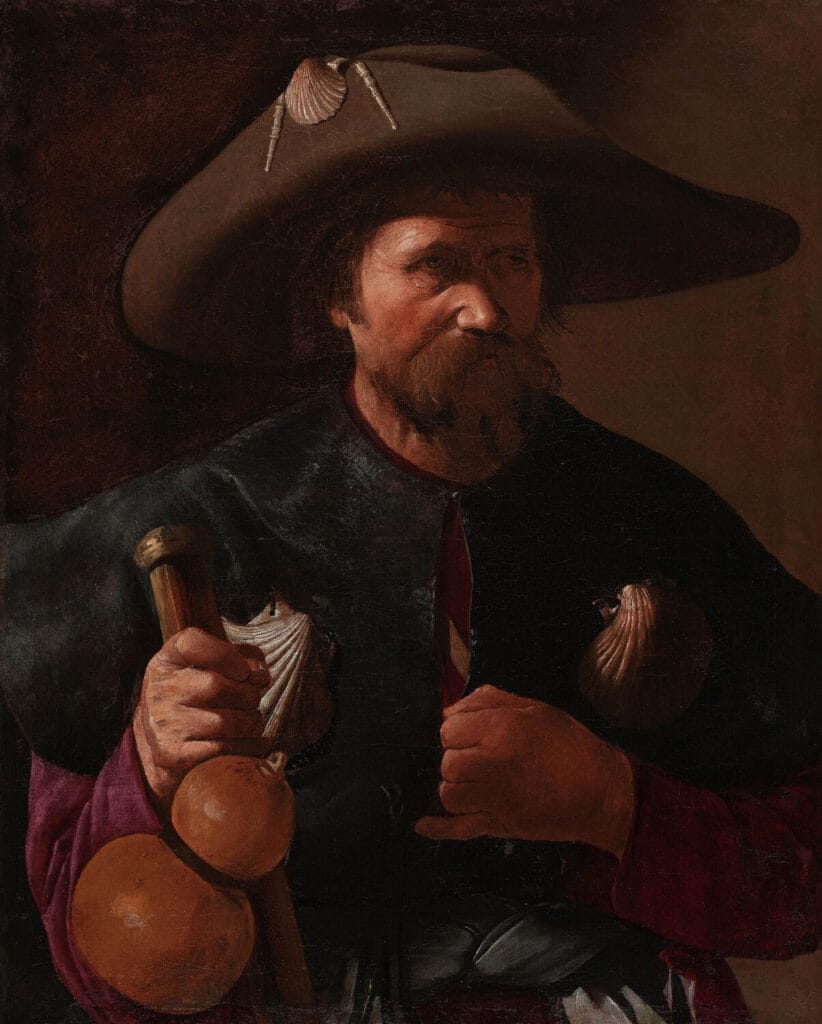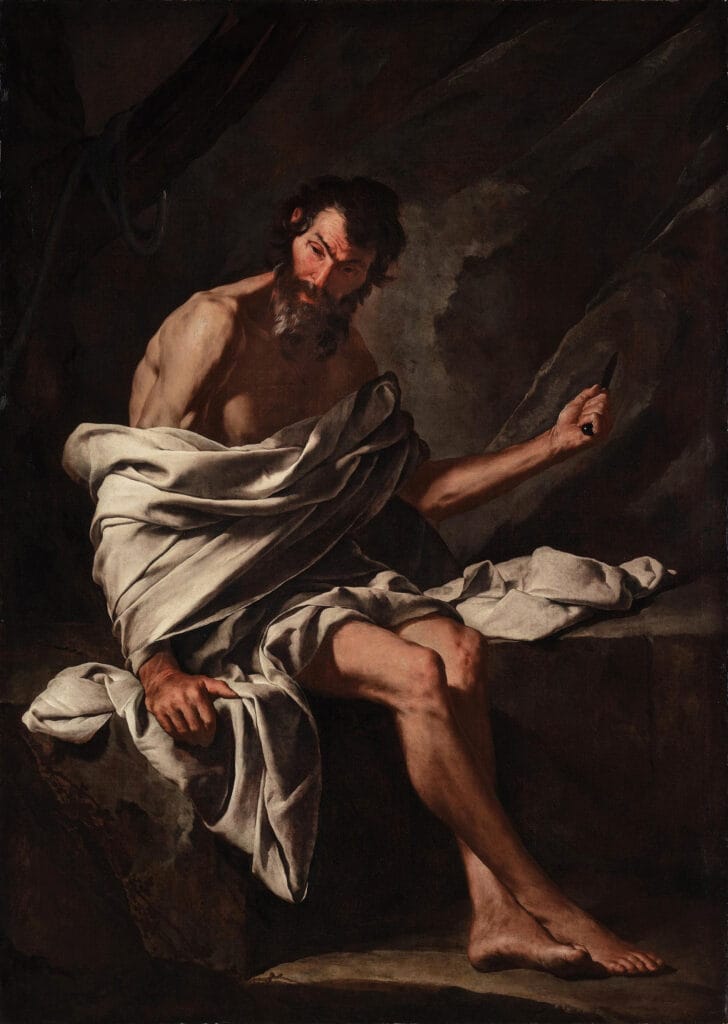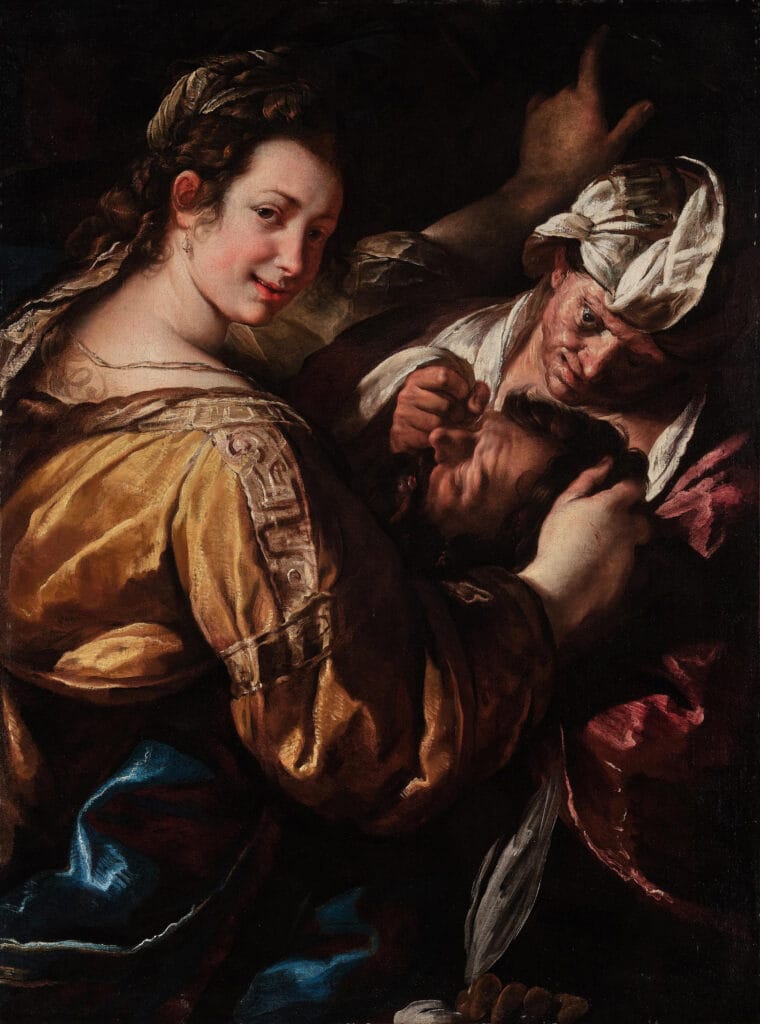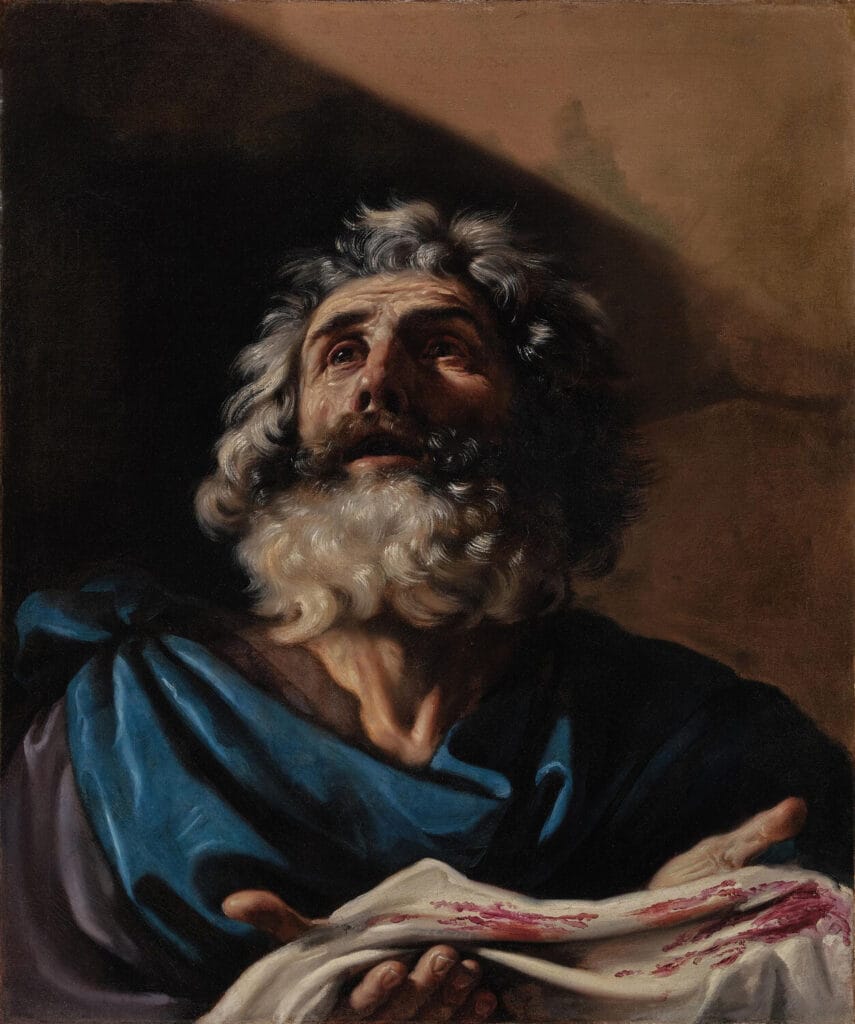The Greatest Private Collection of Baroque MasterpiecesAssembled in Modern Times
THE FISCH DAVIDSON COLLECTION
To Star at Sotheby’s in January 2023
Highlighted by Key Early Rubens Masterpiece
Salome Presented with The Severed Head of Saint John the Baptist Estimated to sell for $25 – 35 million
“What distinguishes the Fisch Davidson collection is the sustained level of quality of the paintings, combined with a willingness to embrace powerful subjects that lesser collectors might find “difficult”. There is nothing shy about these pictures…. These are baroque paintings that speak with a contemporary voice. Their modernity lies in their probing, psychological dimension combined with dramatic flair, realized with brilliantly descriptive brushwork.”
Keith Christiansen, Curator Emeritus, The Metropolitan Museum of Art, New York NEW YORK, 25 October 2022 – Collected with passion and rigor over three decades, the Fisch Davidson collection distills the essence and power of Baroque art between 1600 and 1650, comprising some of the very finest paintings in private hands by Guercino, Bernardo Cavallino, Valentin de Boulogne, Orazio Gentileschi and above all Sir Peter Paul Rubens, which together provide a comprehensive sense of the key artistic currents flowing through early 17th-century Europe. This January, 10 works from the collection will headline Sotheby’s Master’s Week Auctions, led by the jewel of this unparalleled collection, Sir Peter Paul Rubens’ Salome presented with the severed head of Saint John the Baptist. Painted at exactly the same moment in his career as the great Massacre of the Innocents (the Rubens that shattered all price records for Old Masters when auctioned at Sotheby’s in 2002), the Fisch Davidson Rubens was believed to have been lost, prior to its rediscovery in 1998.
As George Wachter, Sotheby’s Chairman and Co-Worldwide Head of Old Master Paintings, has noted:
“The Fisch Davidson collection began in earnest when the early rediscovered masterpiece by Guercino of Jacob Holding Joseph’s Bloodied Coat appeared in a Sotheby’s New York sale in January of 1995…. It was from that early acquisition that a tone and taste level for the collection was established. For me personally, it became immediately apparent that only the boldest images of best quality by the greatest artists would be considered. Indeed, that is what the ultimate result was.”
Christopher Apostle, Sotheby’s Head of Old Master Paintings in New York, commented: “ One would be hard-pressed to uncover a more exemplary collection of Baroque masterpieces, and I count myself lucky to have been able to encounter works of this caliber up close. Each of these artists had a hand in shaping art of the 17th century; and each still has the power to strike awe today, from the extreme emotion of Guercino’s Jacob to the beguiling beauty of Procaccini’s smiling Judith. Rubens’ remarkable Salome presented with the severed head of St. John the Baptist is the inimitable jewel in the carefully curated collection, in so many ways epitomizing the very essence of the Baroque.”
Through a series of immensely careful, thoughtful acquisitions, the collection was subsequently enriched by strikingly complementary and equally exceptional paintings by Guercino’s leading contemporaries, including key works by Bernardo Cavallino and Valentin de Boulogne, and the third of the famous “Sauli” paintings by Orazio Gentileschi, the other two of which are at the Getty Museum. Over the years, paintings from the Fisch Davidson collection have featured prominently in major museum exhibitions globally, at The National Gallery, London; the Prado, Madrid; The Metropolitan Museum of Art, New York (where Mark Fisch has long been a trustee) and elsewhere.
The collection was unveiled this morning in a special preview exhibition, featuring a performance by Baroque instrumentalist Marc Armitano Domingo. Works from Baroque: Masterpieces from the Fisch Davidson Collection will be on public view in New York now through 27 October, and from 4 – 13 November as part of Sotheby’s marquee auction week exhibition. Highlights will travel to Los Angeles, Hong Kong, and London this fall, before returning for pre-sale exhibition this January in New York.
Collection Highlights

“Rubens’ depiction of the beheading of Saint John the Baptist, painted after his return to Antwerp, is a work in which the still young artist fearlessly explores the violent and sexual dynamics of the Biblical narrative like some pre-cinematic Martin Scorsese. It’s the kind of painting that, once seen, you won’t forget.”
Keith Christiansen, Curator Emeritus, The Metropolitan Museum of Art, New YorkLong believed lost until its rediscovery in 1998, this shocking and beautiful panel is an important work from the period shortly after Rubens returned to his native Flanders from his sojourn to Italy. Dating to around 1609, the painting depicts the cautionary tale of Salome, which was popular in the early 17th century for its message to be wary of cunning and powerful women – a theme Rubens would address again in the same year, in his masterpiece Samson and Delilah, which resides in London’s National Gallery. The present work was on loan at the National Gallery in the early 2000s, and subsequently exhibited beside Samson and Delilah in the museum’s 2005-2006 exhibition Rubens: A Master in the Making.
Salome presented with the severed head of St. John the Baptist last appeared at auction over 25 years ago in 1998, when it realized $5.5 million – a record at the time – and returns to the auction block this January with an estimate of $25 – 35 million. The work is one of only three important paintings of historical and biblical scenes by Rubens ever to have come to auction, the other two of which rank among the most valuable old masters ever sold.
Little is known about the commission for the painting, but it is documented in Spanish royal inventories from 1666 until 1700. Rubens marketed himself to Spanish patrons from early in his career, making many trips to Spain, and probably received this commission from one of the many Spanish aristocrats who traveled through Antwerp in those years. This work is his only treatment of this subject executed for a private patron rather than a religious setting.
In this composition, Salome is based on the same female model and wears same red satin dress and yellow satin cloak as Delilah in Samson and Delilah, which had been commissioned to hang above the fireplace of Nicolaas Rockox – a mayor of Antwerp and important patron and friend to Rubens. The size of this work suggests it was originally hung in a more intimate setting. Like Salome, Delilah uses her feminine wiles to ensnare the unsuspecting hero Samson, cut off his hair, and cause his downfall. Rubens painted a third work that echoes the theme of dangerously powerful women in 1609: the now lost Judith and Holofernes.
At the wedding feast of King Herod and Herodias, King Herod was so taken with his new daughter-in-law Salome’s dancing that he promised her whatever gift she desired. St. John the Baptist had recently condemned the union of Salome’s mother Herodias with her own brother-in-law, Herod, and for that offense, she requested his head. In this work, Rubens depicts the moment after the beheading, as the executioner begins to sheath his sword. Salome scolds the head on the silver platter, and the maidservant nearby pulls on his tongue, highlighting both the gruesomeness of the scene and the reason for his execution – his outspoken admonishment of incest. The masterful composition includes six figures, each reacting differently to John the Baptist’s body and severed head.
Rubens returned from Italy in 1608 full of all he had seen and studied there, both Renaissance and Classical, and immediately produced a series of paintings of towering significance within his work, reinterpreting these Italian and classical inspirations, and in particular Michelangelo, in his own uniquely powerful idiom. In the span of barely three years, he painted: the great Raising of and Descent from the Cross triptychs, for the Cathedral of Our Lady, Antwerp, Belgium; Samson and Delilah, in The National Gallery in London, The Massacre of the Innocents in the Art Gallery of Ontario in Toronto, and Salome presented with the severed head of Saint John the Baptist in the Fisch Davidson collection – the only product of this extraordinary onrush of creative energy still in private hands. In style, palette, subject matter, naturalistic detail, and emotion, the relatively intimate panel contains all the drama, violence, and emotional power of the Baroque era.

Painted circa 1614, this masterpiece of Baroque naturalism is among Valentin de Boulogne’s earliest works. Executed soon after Valentin’s arrival in Rome, the artist’s pathos-filled rendition of the mocking and crowning of Christ is a testament to the speed with which he internalized and then synthesized myriad contemporary sources, newly available to him in the Eternal City.
Christ Crowned with Thorns was previously held in the collection of A. Alfred Taubman, and offered in the auction of his collection of Old Masters at Sotheby’s in 2016, when it sold for $5.2 million – the current auction record for the artist.
Valentin was Caravaggio’s most accomplished French follower as well as arguably his greatest acolyte, and Caravaggio’s Christ crowned with thorns in Prato served as an important source of inspiration for the Frenchman, who skillfully adapted his tenebrist style. In essentially Caravaggesque style, Valentin presented the narrative’s actors nearly flush with the picture plane against a bare black background, thus enhancing the scene’s immediacy. The cinematic use of light to focus attention on the centrally positioned Christ is equally evocative of Caravaggio and artists in his orbit. Valentin also looked to sources well beyond Rome: the cruel motif of the menacing man bearing down on Christ’s skull derives from an etching by Annibale Carracci of the same subject.
Valentin focuses this scene on the interplay of three figures, all done dal naturale, or ‘from life’. The drama transpires across the canvas, accentuating the image’s theatrical tension. At left, a young soldier kneels before Christ, with mere inches separating their faces – almost a study in opposites. The youth’s profile is defined by his open mouth, from which one can imagine him shouting invectives. Conversely, Christ looks skyward as a warm light appears to offer the promise of deliverance. At upper right, a ruddy-faced man forces the crown of thorns upon Christ’s head while looking directly at the spectators – a pictorial device that both implicates and involves them in the violent act.

One of the most important and influential artists working in Caravaggio’s circle, Orazio Gentileschi (along with his daughter, Artemisia) was highly esteemed as a painter during his lifetime, a period which saw a remarkable amount of artistic change and innovation. Born in Pisa in 1563, Gentileschi’s illustrious international career saw him travel extensively, including to Florence, Rome, Turin, Paris, and London, and he counted noblemen and monarchs among his patrons, spending the last 12 years of his career as one of the leading painters at the English court of Charles I.
Gentileschi’s Penitent Saint Mary Magdalene marks the pivotal moment when the artist was invited to Genoa by the esteemed patron Giovanni Antonio Sauli to create three large-scale works. The Sauli commission is today heralded as one of the most important of Gentileschi’s career; the other two works from this commission, Danaë and Lot and his daughters, are now in the collection of the J. Paul Getty Museum. When sold at Sotheby’s in 2016, the Danaë fetched more than $30 million, establishing an auction record for the artist.
In this large, impressive work, Gentileschi portrays the penitent Magdalene as devoutly religious, yet also with a mystical sensuousness. The scene derives from Jacobus de Voragine’s 13th-century Golden Legend, which follows Mary Magdalene’s conversion and flight from Palestine. Gentileschi captures her taking refuge in a mountain cave near Marseille, where she spent the last thirty years of her life. Pictorially, Penitent Saint Mary Magdalene is indebted to Gentileschi’s important sixteenth-century forebears: the Magdalene’s outstretched position, parallel to the picture plane, is drawn from the work of Correggio, while the image of her lost in divine reverie looks back to Titian.
This masterful rendering of the Magdalene encapsulates the combination of two fundamental elements in Gentileschi’s art: the power and naturalism of his close associate and friend, Caravaggio, and a formal sophistication stemming from his native Tuscan traditions.

Saint James the Greater is a remarkably modern painting by Georges de la Tour which reemerged in 2005. Previous to this, the work was assumed lost and only known by an extant copy.
The work is the sixth original canvas within a series of thirteen pictures representing the Blessing Christ and the Twelve Apostles, titled the “Albi Series” after their earliest known location in the cathedral of that city. The makeup of the group was preserved in almost its entirety in a series of copies of later date, which now reside in the Musée Toulouse-Lautrec, Albi. Of the original canvases, only two have remained in Albi, and were accounted for over the intervening years: a Saint James the Lesser and Saint Jude Thaddeus. The museum preserves eleven paintings in total, with two Apostles of unknown identity having disappeared completely.
Among the most interesting and enigmatic artists of his time, Georges de la Tour was the most original and unique proponents of Caravaggism in France. The Albi Series represents one of the artist’s most important artistic achievements, and the rediscovery of the Saint James the Greater further reveals much about the complexity of La Tour’s early work, executed during a period when the artist was beginning to refine his natural talent and skill.
Like the Saint James the Greater, three other originals have subsequently been rediscovered: Saint Philip, which was the first to emerge when it appeared on the French market in 1941, followed by Saint Andrew, sold in Monaco on June 21, 1991, (and again in 2021 for $5.2 million), and Saint Thomas, which was also offered at auction the following day in Monaco and subsequently purchased by the National Museum of Western Art in Tokyo in 2003.
The theme of Christ and the twelve apostles was quite popular in the 16th and 17th centuries and was portrayed by various artists including Sir Peter Paul Rubens, Anthony Van Dyck, Jacques Bellange and Jacques Callot. The figures of La Tour differ from those of his predecessors in their almost brutal realism.

“Bernardo Cavallino’s disturbing painting of Saint Bartholomew holding the knife with which he will be martyred as he fatalistically stares into space, contemplating the fate that awaits him. Who would guess that this most elegant of painters could plumb such depths of darkness?”
Keith Christiansen, Curator Emeritus, The Metropolitan Museum of Art, New YorkStanding over five feet in height, this spectacularly grand canvas is one of the largest works Cavallino ever painted. It is also one of only a small number of masterpieces by the artist remaining in private hands. The work was likely painted in the 1640s in Naples, where it can be identified in several important early collections.
No other painting of this quality has appeared on the market since Lot and his daughters and the Drunkeness of Noah. That pair made the still-record price of $1.9 million in 1989 when they entered the collection of Peter Jay Sharp and were subsequently acquired by the Thyssen-Bornemisza Museum, Madrid.
With an almost monochromatic palette, the painting is starkly modern and focuses on the muscular figure of Saint Bartholomew, who holds a knife that foreshadows his eventual martyrdom, when he would be flayed alive. The work’s powerful intensity derives as much from its expressive tenebrism and dramatic composition as from the saint’s naturalistic depiction, rendered with virtuosic brushwork.

“What a shockingly bold picture! This extraordinary Judith with the Head of Holofernes by Giulio Cesare Procaccini was created for one of the most important collectors in Genoa, Gian Carlo Doria, who was also a patron of Rubens during the Flemish master’s stay in Italy.”
Keith Christiansen, Curator Emeritus, The Metropolitan Museum of Art, New YorkThe striking Apocrypha story of Judith is here depicted by Guilio Cesare Procaccini, one of the leading Milanese artists of the seventeenth century. The work was commissioned by Gian Carlo Doria, one of the most important Genoese art patrons of the seventeenth century, in the 1610s, when Procaccini was at the height of his artistic powers. Though the work’s provenance can be traced in the seventeenth century, the painting is a recent discovery, reappearing only in 1992, when sold at Sotheby’s, London for £209,000.
The story of Judith and Holofernes was especially popular during the 17th century and widely represented in music, literature, and the visual arts. According to the biblical narrative, the beautiful widow Judith enters the tent of the cruel tyrant Holofernes, an Assyrian general about to destroy her home city of Bethulia. Once overcome with drink, Holofernes passes out and is swiftly decapitated by Judith. In Procaccini’s Judith and Holofernes, the artist depicts the moment immediately after the decapitation: Judith’s elderly female servant, who appears out of the darkness in the composition’s upper right, has yet to discard with Holofernes’s head.
Most striking is the tight and compact framing, through which Procaccini situates the viewer almost within the scene, thereby implicating them in the violent act. We are beckoned in further by a beguiling Judith who, bedecked in silk and pearls, smiles coyly with an almost gleeful glint in her eye.
The painting showcases Procaccini’s painterly abilities: Judith’s face is painted with exquisite finish, while her maidservant is rendered with a looser touch. The vibrant drapery in the bottom third of the work is executed with a near-expressionistic freedom.

“When this picture was purchased it was extremely dirty, so much so that when cleaned it became apparent that not only was this the original prime version by Guercino, of a picture known in a few other lesser examples, but that it also was dated to a magical early time in Guercino’s trajectory. It was from that early acquisition that a tone and taste level for the collection was established. For me personally, it became immediately apparent that only the boldest images of best quality by the greatest artists would be considered. Indeed, that is what the ultimate result was.”
George Wachter, Sotheby’s Chairman and Co-Worldwide Head of Old Master Paintings.In a moving scene, Giovanni Francesco Barbieri (nicknamed Guercino), captures the paternal anguish of Old Testament patriarch Jacob as he learns of the supposed death of his favorite son, Joseph. Likely completed in 1620, the work dates to Guercino’s celebrated early period, predating his first trip to Rome in 1621.
Painted during the ‘Golden Age’ of Guercino’s career, this work is the finest of the four known autograph versions of the composition. Guercino scholar Denis Mahon described the work as of “manifestly higher” quality than the existing versions and of superlative provenance: an engraving from the 1730s by Joseph van Loo bears an inscription that locates the painting in the collection of Simon Lenfant, who served as Louis XIV’s trésorier general and commissaire général des guerres. The work also corresponds with a painting recorded in the 1686 posthumous inventory of Maffeo Barerini, Prince of Palestrina.
In this arresting work, Jacob, holding his son’s bloodied coat, looks heavenward in confused desperation. Guercino paints with keen attention to Jacob’s wizened features, his upward glance and tormented expression underscoring his shock and distress. Rendering the scene more as an icon than as a narrative, Guercino omits Jacob’s sons who, jealous of his dotage on Joseph, plotted his demise, stripping him of his clothes, and flinging him into a well, before selling him for twenty pieces of silver to passing merchants.
Guercino’s scene deviates from earlier treatments of Jacob in the depiction of Joseph’s coat as a simple white garment, rather than a multi-coloured or richly embellished robe. This contrasts with Jacob, who is draped in a swaths of blue and purple fabric, further highlighting the illuminated white cloth splattered with shades of both crimson and red. Jacob’s lament can be seen as pre-figuring Christ’s Crucifixion, the blood-splattered coat anticipating Christ’s white loincloth.
